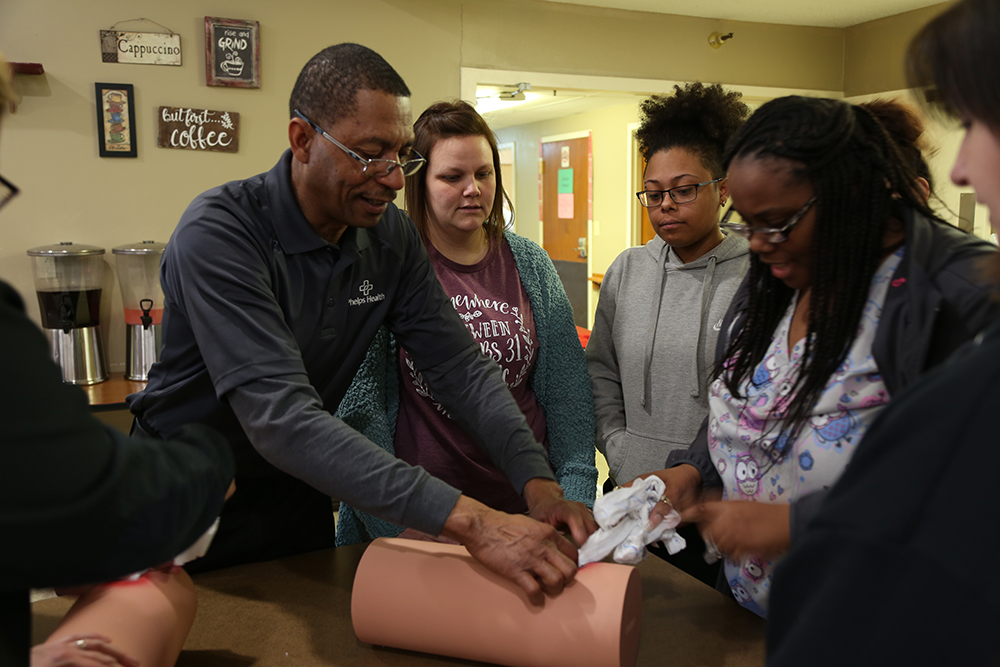
Published on March 13, 2019
Imagine driving up on the scene of a car accident. The driver, who has been ejected from the vehicle, appears to have a wound that is bleeding out of control. No police cars, fire trucks or ambulances have arrived yet, but they are on their way.
You have a choice. Either you can stand by and wait for first responders to assist the victim, or, with the right training, you can become an “immediate responder” and help stop the bleeding, potentially saving the victim’s life.
Phelps Health Emergency Medical Services (EMS) is partnering with the City of Rolla Fire and Rescue to offer this training to the public through the national Stop the Bleed campaign.
“We’ve already taught about six classes so far,” said Ray Massey, director of Phelps Health EMS.
Massey and a few other Phelps Health EMS staff members are certified to teach the Bleeding Control Basics Course. The City of Rolla Fire and Rescue is helping to locally fund the program by providing kits for the instructors and participants to use in the classes.
Through this course, the public is trained, equipped and empowered to help in situations where uncontrolled bleeding is occurring before paramedics or emergency medical technicians (EMTs) arrive.
Uncontrolled bleeding is the number one cause of preventable death from trauma, and due to several circumstances, there may be a delay between the time of the injury and the time when a first responder arrives on the scene.
Studies have shown that the help given by “immediate responders” – individuals who are present at the scene who can immediately control bleeding with their hands and equipment that may be available – can often make the difference between life and death, even before professional rescuers arrive.
The classes include a formal presentation about how to control bleeding in situations, such as motor vehicle crashes, bombings, explosions and mass shooting events. However, uncontrolled bleeding also can occur during accidents at home, work and on the farm or mishaps caused by lawnmowers or bicycles.
“This class covers anything where there is life-threatening blood loss involved,” Massey said.
Additionally, the training course gives participants hands-on practice with direct pressure application, wound packing and use of a tourniquet. The classes can last up to two hours, according to Massey.
The course was developed for a nonmedical audience, so the information is easy for the public to understand.
Phelps Health EMS have led classes for nurses at Rolla Public Schools and at local nursing homes. “Our goal is to educate at least 50% of Phelps County’s population,” Massey said.
This class provides participants with the necessary tools to become “immediate responders.”
After the mass shooting at Sandy Hook Elementary School in Connecticut, the American College of Surgeons formed a joint committee, whose recommendations become known as the Hartford Consensus. One of the recommendations called for training the public on how to control bleeding.
Through the Stop the Bleed program, the American College of Surgeons Committee on Trauma is leading the effort to save lives by teaching the civilian population to provide vital initial response to stop uncontrolled bleeding in emergencies.
For more information on the Stop the Bleed program, visit bleedingcontrol.org.
Want to Host a Stop the Bleed Class?
To request a Phelps Health EMS instructor to teach a bleeding control class to your organization, call (573) 458-7373.